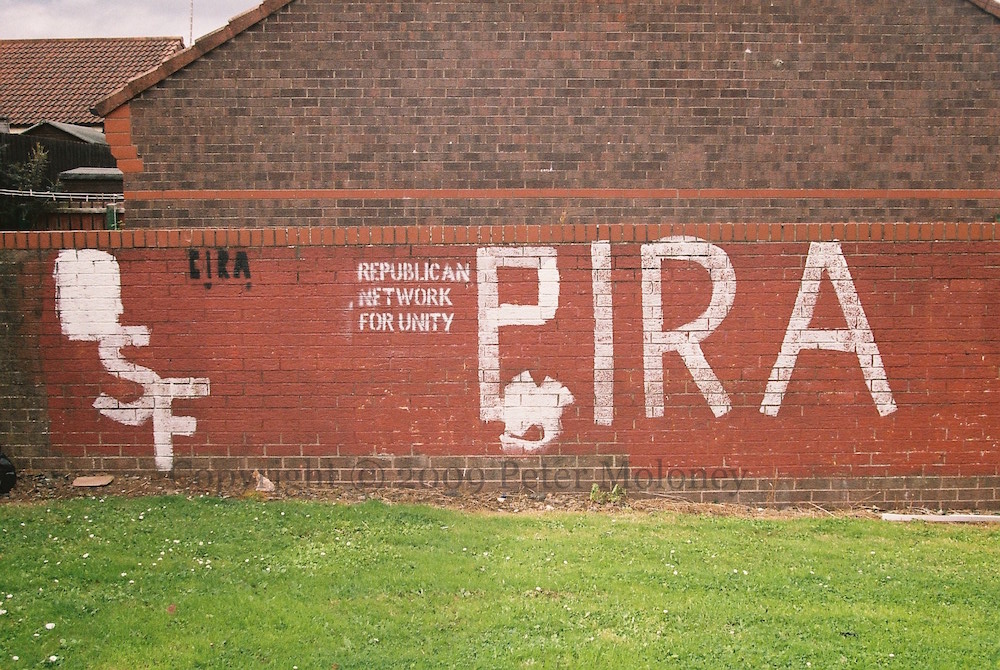
Last week, voters in a member country of the European Union handed an electoral victory to a political party that is, according to police and state security services, under the “oversight” of an armed wing.
I am referring, of course, to Sinn Fein’s success in winning the popular vote in last week’s general elections in the Republic of Ireland and the party’s continuing connections with the Provisional Irish Republican Army.
While the Provos have been on ceasefire for more than two decades, declaring a formal end to their armed campaign in 2005, they never formally disbanded. Or, as Bobby Storey, former IRA chief of intelligence reminded a crowd in 2014, “We haven’t gone away, you know.”
In October 2015, the Police Service of Northern Ireland, and MI5, the British state security service, were compelled to publicly acknowledge that while the Provisional IRA had dismantled its “combat” capabilities in 2005 and ended recruiting and weapons procurement, it had been allowed to retain its senior leadership structures, including the Army Council and regional commands, intelligence gathering, and internal security departments. It also retained access to weapons.
In fact, as I wrote here and again here on the blog back in 2015, the continued existence of the Provisional IRA has been integral to the success of the Northern Ireland peace process. I go into considerable detail on this in “The Movement Moves Against You,” an article I published in the journal Terrorism and Political Violence. It first appeared online in 2016 and then in print in 2018. I explained it this way on the blog in 2017:
While command, intelligence, and internal security structures were allowed to remain mostly intact after 2005, as British security services were compelled to acknowledge in 2015, what armed capability the PIRA retained in the years since the 1998 Good Friday Agreement has been largely used to cow – and occasionally quiet – opposition to the political direction taken by Adams and the leadership of Provisional Republican Movement.
That 2015 PSNI/MI5 assessment also said something especially relevant today about the intimate connection between the PIRA and Sinn Fein:
PIRA members believe that the PAC (Provisional Army Council) oversees both PIRA and Sinn Fein with an overarching strategy. We judge this strategy has a wholly political focus.
To be completely clear. According to British and Northern Irish security services, Sinn Fein, the political party, is overseen by the senior leadership of a terrorist group, the Provisional IRA. That leadership retains control over what remains of its armed capability.
And lest you think this is all in the past … Three days ago, the new Chief Constable of the PSNI dodged lawmakers’ questions about the status of the PIRA, instead directing those questions to his political masters in the Northern Ireland Office. But in November, PSNI spokesmen had this to say to the Belfast News Letter:
Four months ago the PSNI told this paper there had been “no change” since the 2015 government assessment; Prompted by the murder of Kevin McGuigan, the 2015 report said that the PIRA Army Council was still overseeing both Sinn Fein and the remaining structures of the terror organisation with an “over arching strategy”.
“With regards to PIRA, there has been no change since the Paramilitary Assessment in 2015,” the PSNI told the News Letter in November.
The government report, published in 2015 and based in part on PSNI assessments, concluded that the second largest political party in both Northern Ireland and – now the Republic of Ireland also – continues to be overseen by the deadliest terror group of the Troubles, which although much reduced in scale and “committed to the peace process”, still has “specific” departments and “regional command structures”, gathers intelligence, retains weapons and has been involved in “isolated incidents of violence, including murders”.
Now on to this week’s look back at terrorism history.
- Feb, 17, 2004 — Belfast, Northern Ireland: Three members of the Ulster Defense Association are shot by British soldiers. One is killed immediately, another dying several days later.
- Feb. 18, 2002 — Israel: An Israeli police officer is killed in a suicide bombing. The al-Aqsa Martyrs Brigade claims responsibility.
- Feb. 20, 1998 — Japan: Japanese Red Army member Tsutomu Shirosaki is sentenced to 30 years in prison for an attack on the U.S. embassy in Indonesia.
- Feb. 21, 1999 — Northern Ireland and Ireland: Seven people are arrested in Northern Ireland and the Republic of Ireland in connection with the August 1998 Omagh bombing. That car bomb attack, attributed to the Real Irish Republican Army, which had broken away from the Provisional IRA a year earlier, killed 29 people and wounded more than 200.
- Feb. 21, 2004 — Northern Uganda: The Lord’s Resistance Army carries out an attack on a refugee camp. More than 230 are killed and another 40 wounded.
- Feb. 23, 1998 — Worldwide: Osama bin Laden and al Qaeda issue a fatwa, or religious decree, calling for the killing of Americans wherever they are found.